Seaweeds of the South African South Coast


Order Ceramiales
Family Wrangeliaceae
Spongoclonium caribaeum (Børgesen) M.J.Wynne 2005: 23, 87
Plants up to a few cm tall, attached basally by a number of rhizoidal filaments. Main axes up to 150 (-200) µm in diameter, in the lower regions surrounded by a loose cortex of rhizoidal filaments. One lateral per segment, these formed multilaterally or in part bilaterally, as a rule re-branched once, young laterals somewhat incurved. Apical cells ca. 12 µm in diameter.
Tetrasporangia (occasionally octosporangia) in series, sessile on the ultimate branchlets, one sporangium per cell, measuring ca. 55 x 50 µm, tetrahedrally divided. Male stands cylindro-conical, in similar positions as the tetrasporangia, with a ca. five-celled central axis, measuring ca. 75 x 30 µm. Carposporophytes with a number of gonimolobes of different ages; the largest up to 400 µm in diameter; virtually all cells developing into carpospores, ca 25 µm in diameter.
Collections, ecology and regional distribution
Recorded from False Bay to northern KwaZulu-Natal (17-58). Noted by Stegenga et al. (1997) as fairly common in the Eastern Cape. Epilithic and epiphytic in the sublittoral fringe to at least 30 m depth (De Clerck et al. 2005).
World distribution: almost world-wide in warm temperate to tropical areas (references in Guiry & Guiry 2015).
Type locality: Annaberg, St. John, Virgin Islands (Silva et al. 1996).
Note: Earlier known as Pleonosporium caribaeum (Rosenvinge) R.E. Norris, it was moved to Spongoclonium by Wynne (2005) because it possesses tetrasporangia (sometimes octosporangia) rather than polysporangia. The same would apply to Pleonosporium callicladum R.E. Norris although that species has not formally been transferred to Spongoclonium.
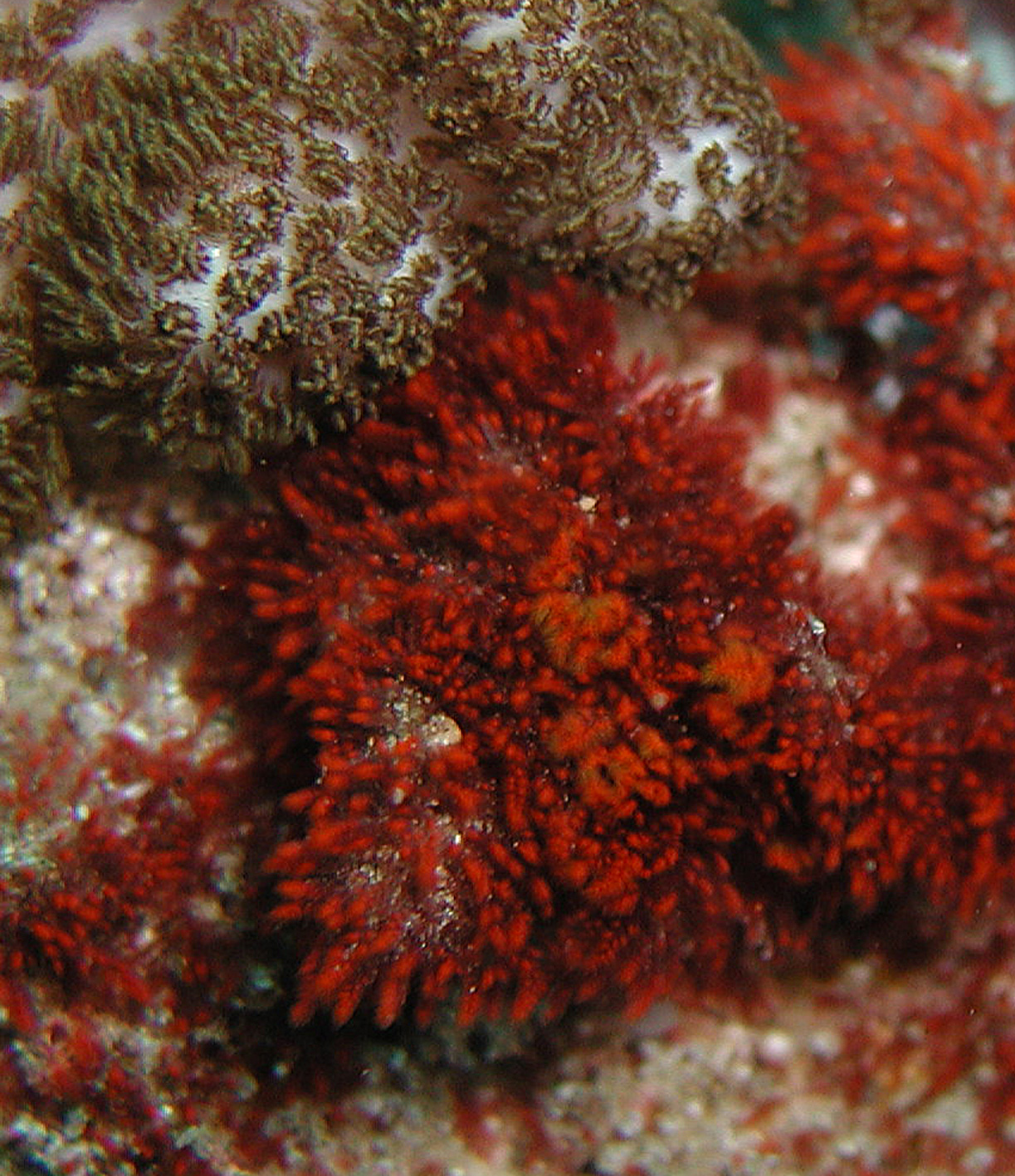
Spongoclonium caribaeum. Photographed in KwaZulu-Natal (O. De Clerck).
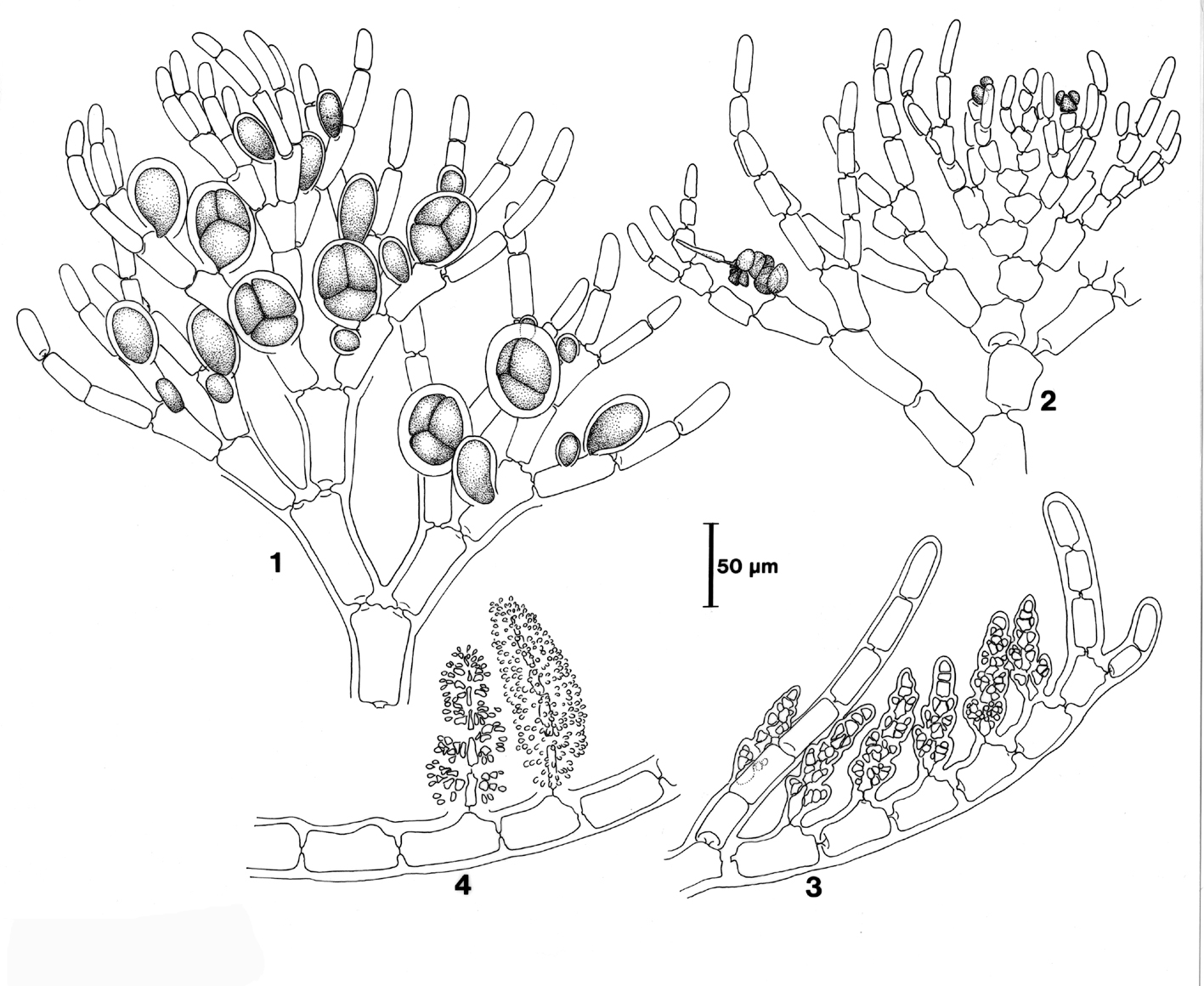
Spongoclonium caribaeum, reproductive structures. 1 Tetrasporangia. 2 Stages in development of procarp. 3, 4 Development of spermatangial stands. Reproduced from Stegenga et al. (1997), as Pleonosporium caribaeum.
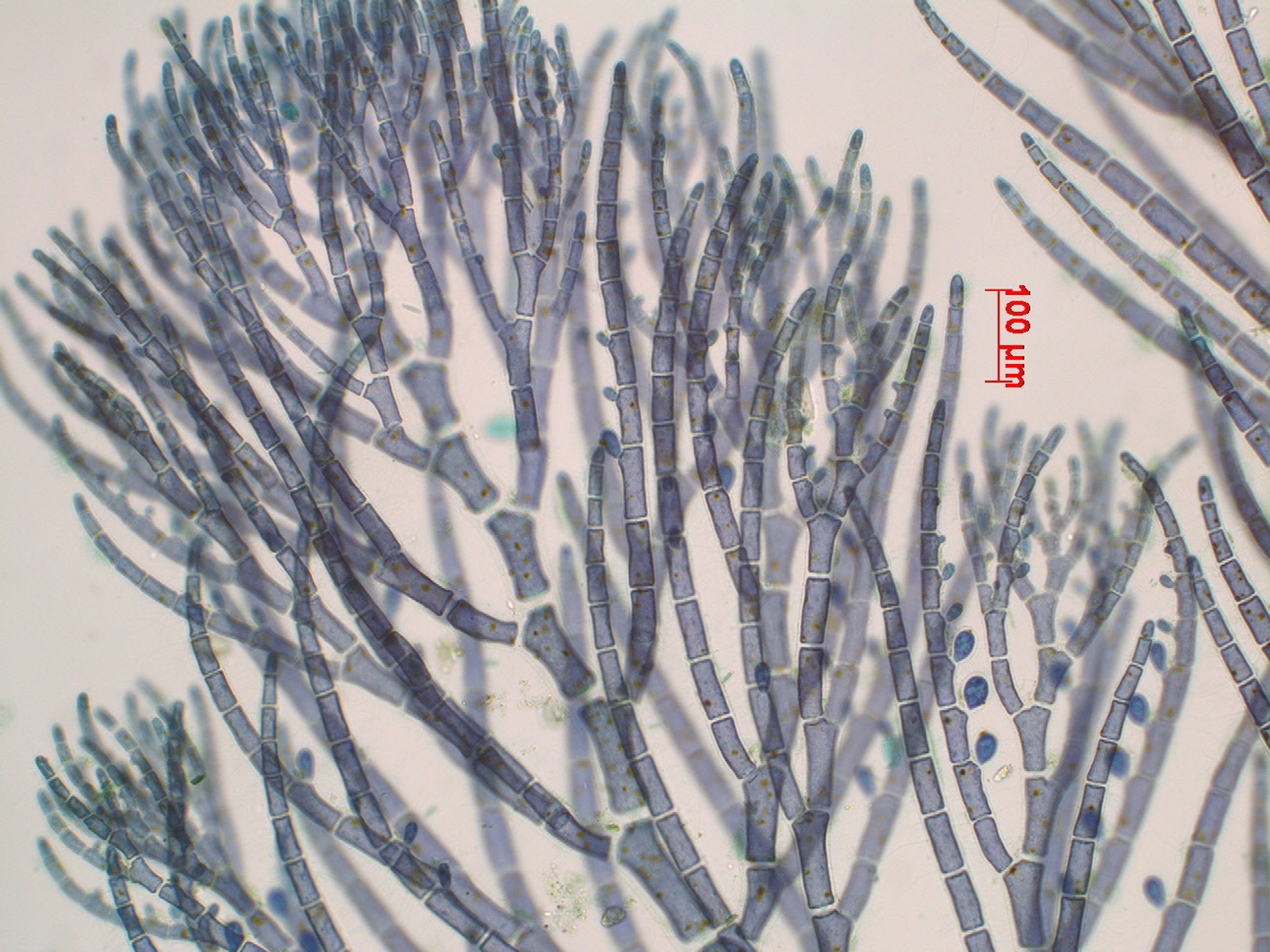
Spongoclonium caribaeum, thallus apex with young tetrasporangia. Stained slide material, Goukamma oyster beds.
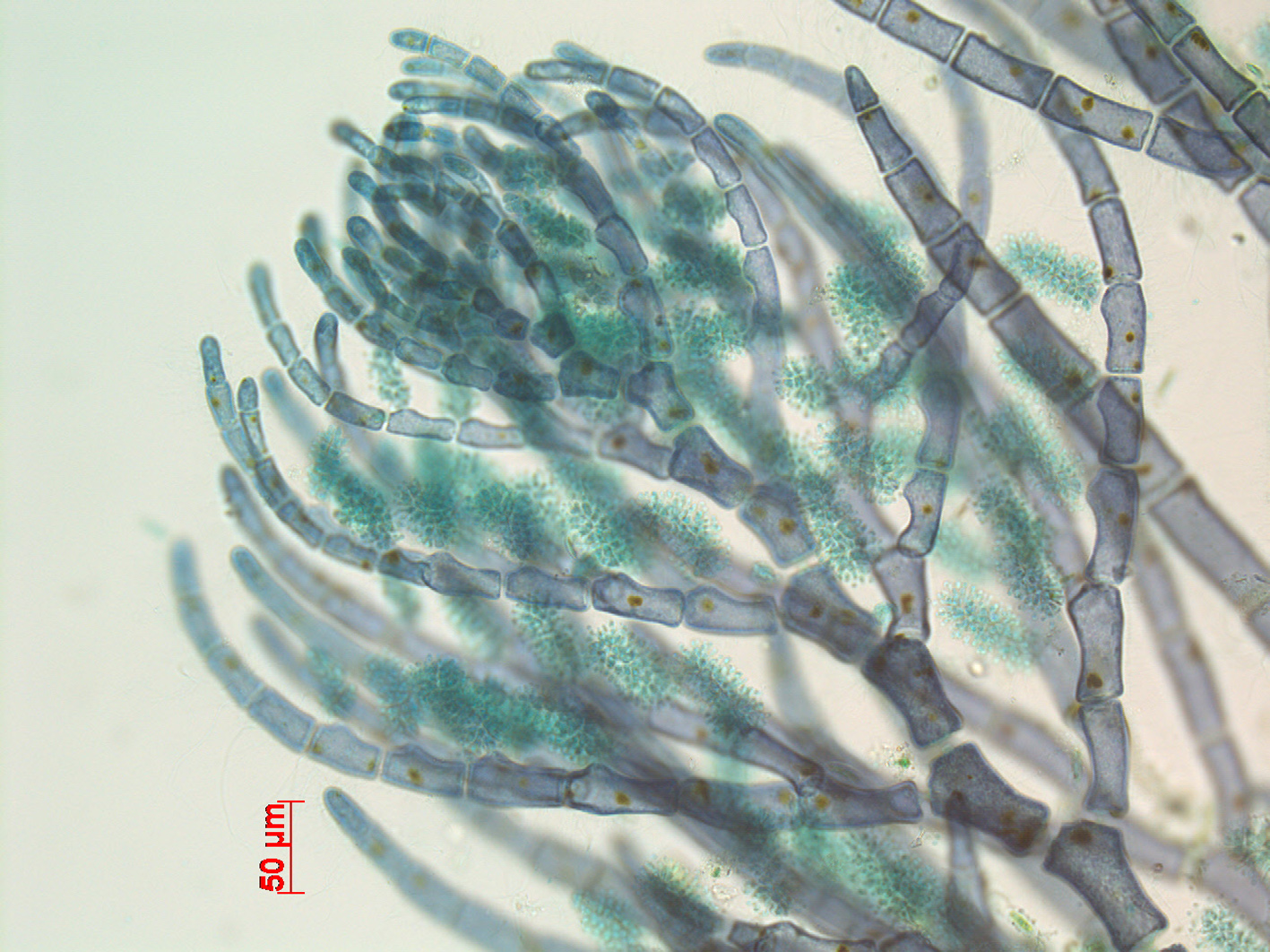
Spongoclonium caribaeum, spermatangial stands. Stained slide material, Goukamma oyster beds.
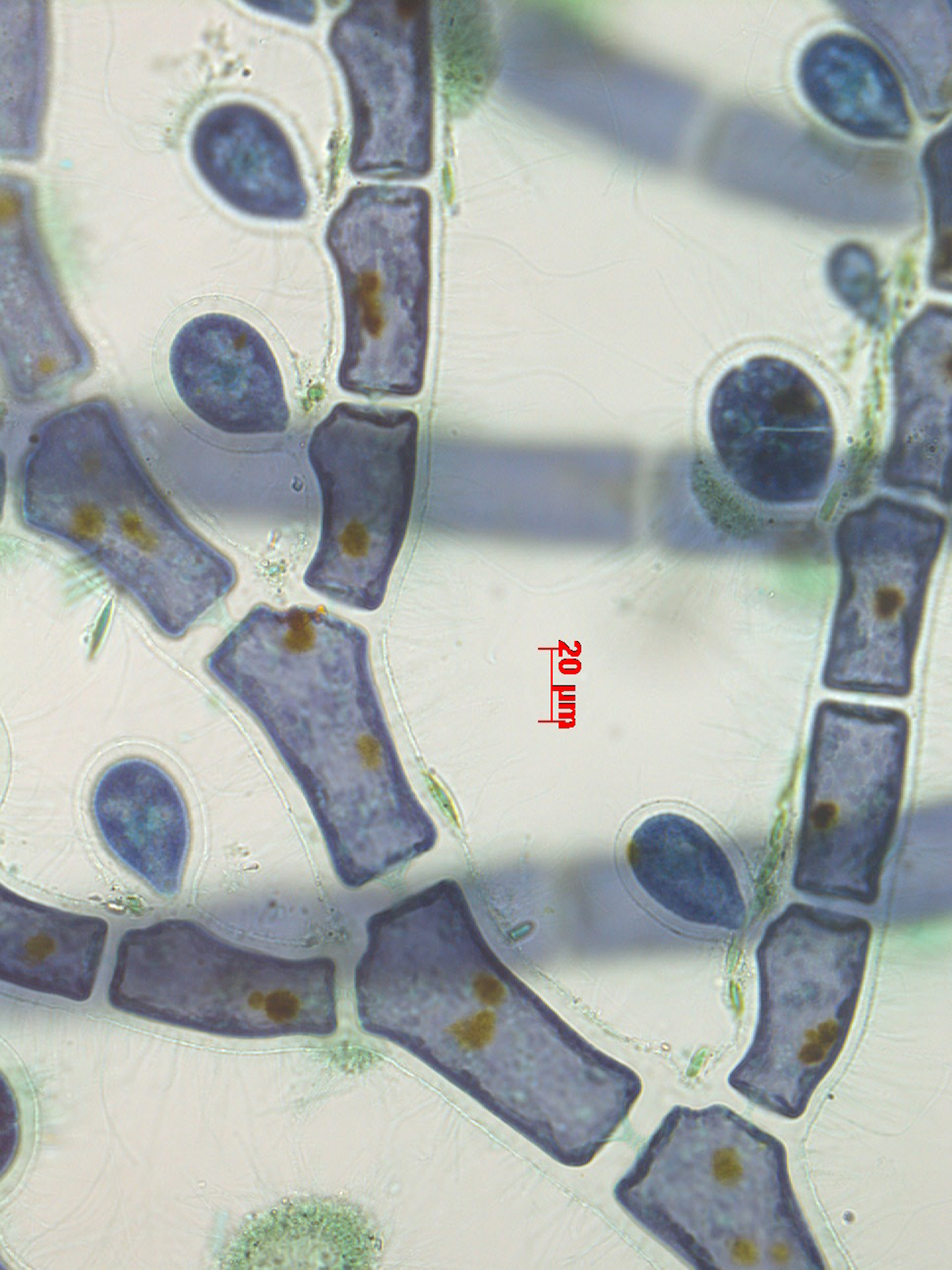
Spongoclonium caribaeum, tetrasporangia. Stained slide material, Goukamma oyster beds.
References Spongoclonium caribaeum
De Clerck, O, Tronchin, E. M., Schils, T. 2005. Red algae. In: De Clerck, O., J.J.Bolton, R. J. Anderson and E. Coppejans, 2005. Guide to the Seaweeds of KwaZulu-Natal. National Botanic Garden of Belgium, Brussels (Scripta Botanica Belgica), pp. 130-269.
Guiry, M.D. in Guiry, M.D. & Guiry, G.M. 2015. AlgaeBase. World-wide electronic publication, National University of Ireland, Galway. http://www.algaebase.org; searched on 09 December 2015.
Stegenga, H., Bolton, J.J. & R. J. Anderson. 1997. Seaweeds of the South African west coast. Contributions from the Bolus Herbarium 18: 655 pp.
Wynne, M.J. 2005. A check-list of benthic marine algae of the tropical and subtropical western Atlantic: second revision. Beihefte zur Nova Hedwigia 129: 1-152.
Cite this record as:
Anderson RJ, Stegenga H, Bolton JJ. 2016. Seaweeds of the South African South Coast.
World Wide Web electronic publication, University of Cape Town, http://southafrseaweeds.uct.ac.za; Accessed on 07 December 2025.